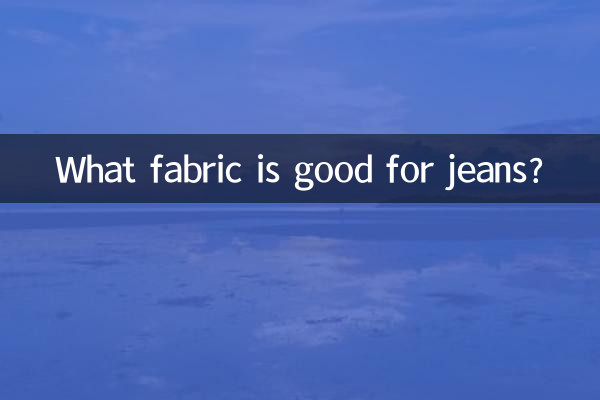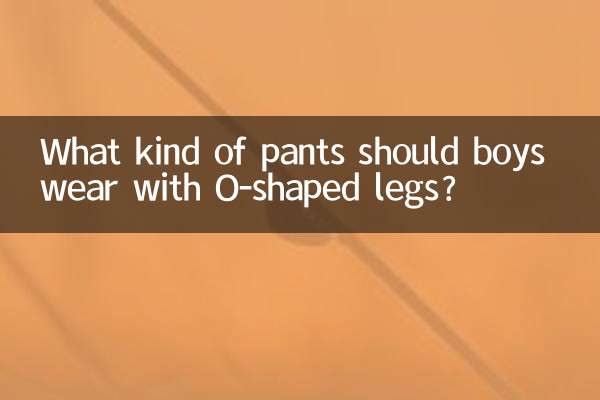What fabric is good for jeans? Analysis and purchasing guide of popular fabrics on the entire network
In the past 10 days, discussions about jeans fabrics have soared on social platforms and e-commerce websites, and consumers' attention to comfort, environmental protection and durability has increased significantly. This article will combine hot topics across the Internet to analyze the advantages and disadvantages of different jeans fabrics, and attach structured data comparisons to help you make a more informed choice.
1. Ranking of popular jeans fabrics

Based on e-commerce sales, social media discussions, and industry reports, here are the most popular types of jeans fabrics these days:
| fabric type | Heat Index (1-10) | Core advantages | Main disadvantages |
|---|---|---|---|
| Pure cotton (100% Cotton) | 9.2 | Breathable, sweat-absorbent, classic and durable | Easy to shrink and lack of elasticity |
| Cotton+Spandex (Cotton+Spandex) | 8.7 | Good elasticity and fit the body | Easily deformed after long-term wearing |
| Recycled Cotton | 7.5 | Environmental protection, reducing resource waste | higher price |
| Tencel cotton (Tencel+Cotton) | 7.1 | Soft, skin-friendly, antibacterial | Poor wrinkle resistance |
| Bamboo Fiber | 6.8 | Naturally antibacterial and highly breathable | Average wear resistance |
2. The three major issues that consumers are most concerned about
1.“Which fabric is best for summer?”
The recent hot weather has made "breathability" a search keyword. Pure cotton and bamboo fiber have become the first choice in summer due to their outstanding moisture absorption and perspiration capabilities. In particular, the natural cooling properties of bamboo fiber are frequently recommended by Xiaohongshu users.
2.“Are eco-friendly jeans really worth buying?”
The #sustainablefashion topic has over 200 million views on Weibo. Although jeans made of recycled cotton fabric are 20%-30% more expensive than ordinary jeans, Generation Z consumers are more willing to pay the environmental premium.
3.“Do elastic fabrics make me look fat?”
Douyin evaluation shows that jeans containing 8%-12% spandex can modify the shape of the legs without being overly tight and are suitable for daily wear, while styles with more than 15% spandex are more suitable for sports scenes.
3. Purchasing suggestions and pitfall avoidance guides
Based on popular product reviews and user feedback, we’ve put together the following practical suggestions:
| Demand scenario | Recommended fabrics | Represent the brand | Reasonable price range |
|---|---|---|---|
| daily commute | Cotton+5% spandex | Levi's, UNIQLO | 300-600 yuan |
| outdoor activities | Polyester blend | The North Face | 500-900 yuan |
| environmentalism | Recycled cotton/organic cotton | MUD Jeans | 800-1500 yuan |
4. New trends in the industry: the rise of smart fabrics
In the past 10 days, technology media have focused on reporting on jeans fabrics equipped with temperature regulation functions. For example: -Phase change material (PCM) fabric: Automatically adjusts warmth/heat dissipation based on body temperature -graphene coating: The antibacterial performance is improved by 300%. Although these products have not yet been launched on a large scale, they have been pre-sold at the Tmall flagship store, and the price is more than 2,000 yuan.
To sum up, choosing jeans fabric requires balancing comfort, functionality and budget. Traditional pure cotton is still a safe brand, while consumers who pursue special functions or environmental protection value can pay attention to innovative fabrics. It is recommended to check the ingredients on the wash label before purchasing, and give priority to products with OEKO-TEX® certification.

check the details

check the details